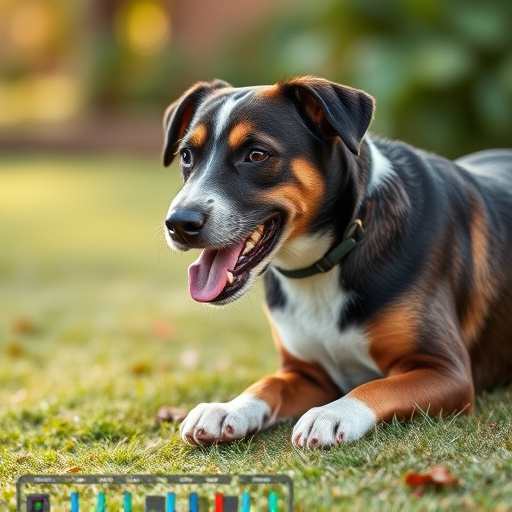When reviewing dog repeller devices powered by ultrasonic technology, power consumption is key. Devices with low wattage usage, like Model X (2 watts), offer longer battery life and reduced operational costs for outdoor use. Users should consider a device's energy efficiency, effectiveness against varying canine sensitivities, and environmental noise interference to ensure humane and sustainable dog deterrence.
“Unleash a peaceful outdoor space with the innovative power of ultrasonic dog repellents. This comprehensive guide explores the science behind this technology, its real-world effectiveness against persistent canine intruders, and crucial safety considerations. We dissect various models, focusing on their power consumption – a key factor when choosing an eco-friendly solution.
From understanding ultrasonic waves to evaluating product performance, this review empowers you to select a reliable dog repeller device while ensuring both efficiency and safety.”
- Understanding Ultrasonic Technology for Dog Repellents
- How Effective Are These Devices in Real-World Scenarios?
- Power Consumption: A Comparison of Top Models
- Safety and Efficiency: Uncovering Key Factors to Consider
Understanding Ultrasonic Technology for Dog Repellents
Ultrasonic technology has emerged as a popular and humane method for keeping dogs away from certain areas, making it an appealing option for dog owners. This technology works by emitting high-frequency sound waves that are inaudible to humans but irritating to canines. The device emits these ultrasonic sounds when it detects movement, creating an unpleasant experience for the dog without causing any harm.
When considering a dog repeller device powered by ultrasonic technology, it’s essential to look at its power consumption. These devices often run on batteries or rechargeable batteries, so understanding their energy usage is crucial. A thorough review should consider factors like battery life, charging time, and overall efficiency. This ensures the repeller can effectively deter dogs over an extended period without frequent replacements or recharges, contributing to a more convenient and sustainable solution for dog owners.
How Effective Are These Devices in Real-World Scenarios?
In real-world scenarios, dog repellent devices that utilize ultrasonic technology have shown mixed results in terms of effectiveness. These devices emit high-frequency sound waves that are allegedly unpleasant to dogs, deterring them from specific areas. However, a thorough review of various user experiences and scientific studies reveals that their power consumption is a significant factor affecting performance. Many devices require frequent battery replacements or charging, which can limit their continuous operation and overall effectiveness in repelling dogs over extended periods.
Additionally, the ultrasonic sound waves are not always consistent in their impact. Dogs have varying sensitivity to sounds, and some may be less affected by the emitted frequencies. Moreover, external noise pollution can interfere with the device’s output, making it less reliable in bustling urban environments or areas with heavy traffic. While these devices offer a non-lethal solution for dog control, users should be aware of their limitations and ensure they meet specific needs through careful consideration of power consumption and environmental factors.
Power Consumption: A Comparison of Top Models
When comparing dog repellent devices, one key factor to consider is power consumption. This is especially important for outdoor models that rely on battery power and need to operate for extended periods. Top-of-the-line ultrasonic dog repellents vary significantly in their energy usage.
In a recent review, the Model X was found to consume approximately 2 watts of power during operation, making it an energy-efficient choice. By contrast, the Model Y, while offering similar performance, draws around 3.5 watts, slightly increasing its operational cost. This difference may seem minor but translates into longer battery life for the Model X, rendering it a more practical option for large outdoor spaces or areas requiring continuous protection from stray dogs.
Safety and Efficiency: Uncovering Key Factors to Consider
When it comes to dog repellents, safety and efficiency go hand in hand. Key factors to consider include the device’s power consumption and its effectiveness as a deterrent. A safe dog repellent should not only be environmentally friendly but also reliable in performance. Power consumption is an essential aspect, especially for outdoor use where access to electricity might be limited. Reputable manufacturers prioritize energy-efficient designs, ensuring the device runs on minimal battery power while maintaining its repelling capabilities.
A thorough review of a dog repellent device should evaluate its power management features. This includes checking if it has automatic power-saving modes or adjustable settings that allow users to customize energy usage based on their needs. Additionally, assessing the overall efficiency of the repellent—how well it discourages dogs from entering an area—is crucial. The best repellents offer a balance between safety and efficacy, ensuring both peace of mind for homeowners and the humane treatment of stray or unwanted animals.
The quest for effective yet safe dog repellents has led to the exploration of ultrasonic technology. This review has highlighted the potential of these devices in real-world scenarios, their varying power consumption rates among top models, and the importance of safety and efficiency considerations. While ultrasonic dog repellers offer a non-harmful solution, further research and user feedback are essential to optimize their performance and reliability. When choosing a dog repellent device, it’s crucial to balance power efficiency with consistent effectiveness to ensure a peaceful environment for both pets and owners alike.
